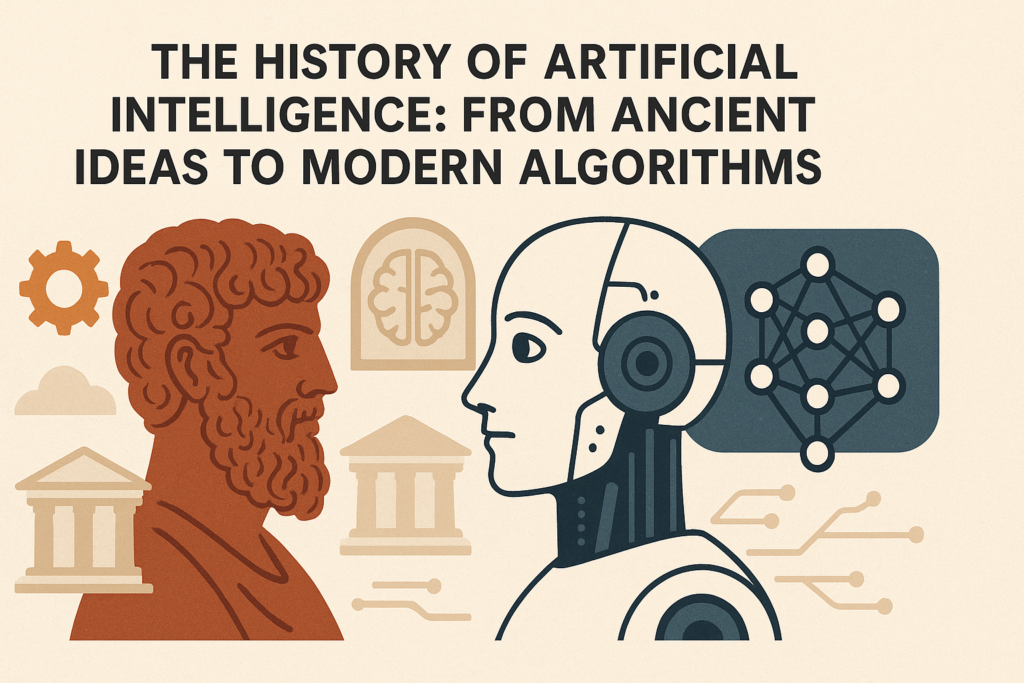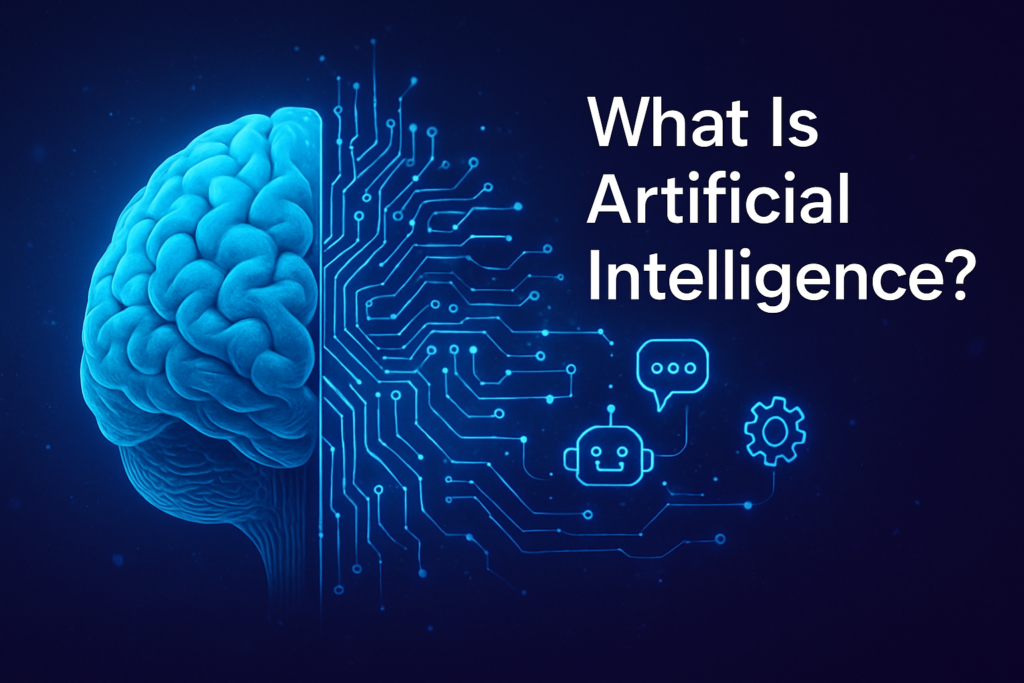Inside the Military AI Contracts Shaping Tomorrow’s Warfare

“Pentagon awards over $200 million in AI contracts to Anthropic, OpenAI, Google and xAI to power the next era of national security.”
That’s not science fiction, it’s the latest headline shaping modern defense.
As global threats evolve cyber warfare, drone swarms, hypersonic missiles traditional military response systems are struggling to keep up. Enter artificial intelligence. These military AI contracts aren’t just about faster data processing, they’re about redefining how wars are fought and deterred.
From battlefield decision-making to predictive threat analysis, AI is rapidly becoming the backbone of 21st-century defense strategy.
The Pentagon’s AI contracts worth hundreds of millions signal a clear shift: human commanders are still in charge, but AI is the indispensable second brain. Whether it’s OpenAI’s models analyzing reconnaissance data, or xAI optimizing logistics for faster deployment, the race is on to fuse cutting-edge innovation with national defense.
For anyone watching the intersection of tech and geopolitics, this is ground zero.
What Are Military AI Contracts and Why Are They Crucial?
The Pentagon isn’t just shopping for smarter software it’s laying the foundation for a new era of national defense strategy powered by artificial intelligence. These Department of Defense AI awards are more than line items in a budget they’re blueprints for battlefield transformation.
The Scope and Goals of These AI Contracts
So, what exactly are these military AI contracts funding?
In short: everything from large-scale model development to hardened infrastructure and agentic AI workflows designed to support defense operations in real time.
Let’s break it down by provider:
Anthropic is delivering Claude-Gov, a customized version of its Claude 3 model with enhanced security protocols, trained on national security-specific datasets. Its purpose? Help military analysts parse massive amounts of data in seconds not hours.
OpenAI is deploying adapted versions of GPT-4 for intelligence summarization, cyber defense simulations and multilingual threat assessments ideal for fast-moving, global operations.
Google is focused on AI infrastructure, think scalable cloud deployments that can support hybrid AI-military systems while meeting federal security compliance.
xAI, Elon Musk’s venture, is contributing Grok for Government, a variant fine-tuned to respond with fast, contextual insights during mission planning and scenario modeling.
The Department of Defense (DoD) isn’t just chasing shiny tools. These AI deployments align with a broader strategy: to enhance national security through automation, intelligence amplification and operational resilience.
The Challenge of AI in Defense
Of course, this isn’t plug-and-play.
Implementing AI in defense systems involves solving some of the hardest problems in technology and ethics:
Data security: Sensitive battlefield and intelligence data can’t leak period. That’s why these models must operate in tightly controlled, often air-gapped environments.
Ethical use: The U.S. DoD has issued AI principles, but tensions remain over autonomous weapons and decision-making without human oversight.
Real-time decision-making: Combat scenarios don’t wait for a loading bar. Agentic AI must function with speed and precision, under unpredictable conditions.
Integration headaches: Legacy defense systems weren’t exactly built for seamless AI compatibility. Think trying to sync a quantum computer with a Cold War-era radar array.
Meanwhile, the competitive landscape is heating up. From traditional defense contractors to nimble AI startups, everyone wants a seat at the procurement table. The edge? Frontier AI models trained on domain-specific data and capable of operating autonomously in high-stakes environments.
In short, military AI adoption is not just a tech challenge it’s a geopolitical arms race of intelligence.
How These Contracts Are Revolutionizing Military Capabilities
It’s not just about smarter software it’s about building a faster, more adaptive and more resilient national defense system. Thanks to multi-million-dollar investments in AI-enabled warfighting, the future of military readiness is becoming radically intelligent.
Cutting-Edge Solutions in Development
Today’s frontier AI capabilities are reshaping how the military perceives, predicts and responds to threats.
Take AI-enhanced surveillance systems they can now analyze satellite and drone footage in real-time, detecting unusual patterns or hidden movements that human analysts might miss. These aren’t sci-fi dreams; they’re happening now.
Consider:
Autonomous drones equipped with AI vision models that can adapt mid-flight based on battlefield conditions.
Cyber defense platforms that use machine learning to identify and neutralize security breaches before they compromise critical systems.
Agentic AI workflows, like those being tested by the Pentagon, that automate mission planning, logistics coordination and real-time decision trees all while keeping a human in the loop for oversight.
The result? Faster decisions, fewer errors and enhanced protection for troops and civilians alike. AI isn’t replacing generals, it’s amplifying their ability to lead in complex, high-stakes scenarios.
Economic and Strategic Impact
Beyond tactical improvements, these national security AI investments are a shot in the arm for the U.S. tech economy.
Job creation: From defense engineers to AI ethicists, the ecosystem around these contracts is creating thousands of high-skilled roles.
Startups and spin-offs: Many defense-funded innovations eventually find their way into the private sector. Think about how the internet started as a DARPA project.
Strategic dominance: With China and Russia aggressively pursuing military AI, these U.S. contracts help preserve a critical edge in global defense technology.
There’s also a ripple effect. As these AI-enabled military innovations mature, adjacent sectors like enterprise security, logistics and intelligence systems are rapidly adopting similar tools.
In short, these contracts don’t just defend they drive innovation across the economy, securing America’s lead in the global AI arms race.
What Stakeholders Can Do to Engage with Military AI Evolution
The transformation of defense through AI isn’t just a government initiative it’s a collaborative push. From defense contractors to policymakers and researchers, there’s a clear opportunity (and responsibility) to shape how AI integrates into national security.
For Defense Contractors and Tech Innovators
If you’re part of the defense tech space, adapting to the new AI-driven procurement landscape is no longer optional it’s survival. That means understanding evolving compliance standards, staying on top of DoD contract frameworks and building partnerships with larger primes already embedded in federal systems.
But beyond the paperwork, what really sets vendors apart today is innovation in ethical AI design, explainability and security-first architectures. If your AI solution can’t demonstrate how it handles bias, data integrity, or hostile attacks it’s unlikely to see action in a mission-critical environment. The bar is higher now. And rightly so.
For Policymakers and Regulators
You don’t need to code to shape the future of AI defense systems. What’s needed is clarity on where oversight begins, how far transparency should go and how we balance innovation with accountability.
This isn’t just about risk management. By promoting interoperability standards and fostering public-private R&D collaboration, policymakers can ensure that public sector AI deployment doesn’t just follow best practices it sets them. The global AI race isn’t just technical; it’s strategic. Regulatory leadership matters.
For Researchers and AI Professionals
Think defense is too bureaucratic for innovation? Think again. The demand for talent in agentic workflows, secure model architecture and frontier AI research has exploded. Whether you’re in academia, private research, or just tinkering with open-source models there’s room (and funding) for you here.
Grants, sandbox projects and innovation challenges from the DoD and DARPA aren’t just resume boosts they’re where some of the most advanced AI systems of this decade are born. If you’re looking to work on something that truly pushes boundaries and has real-world impact this is it.
Frequently Asked Questions (FAQs)
What are military AI contracts and why are they important?
Military AI contracts are agreements between the Department of Defense and AI companies to develop or deploy advanced technologies that can support national security. These aren’t just tech deals they’re strategic moves to modernize defense systems. From faster battlefield decision-making to improved threat detection, these contracts are reshaping how the U.S. prepares for evolving global risks. With rising geopolitical tensions and increasing cyber threats, investing in artificial intelligence for defense has become mission-critical.
How do AI models like Anthropic’s Claude Gov and OpenAI enhance defense?
AI models such as Anthropic’s Claude Gov and OpenAI’s government-grade deployments are already being used to power simulations, manage massive data sets and improve real-time situational awareness. Picture AI-enhanced surveillance that detects unusual activity faster than any analyst could, or simulations that let commanders test scenarios before making risky calls. These defense AI models act more like strategic assistants augmenting, not replacing, human decision-makers.
What are the ethical considerations of military AI?
Military AI ethics is one of the hottest and most necessary topics today. On one hand, these systems can save lives with smarter decision-making. On the other, there’s real concern about bias in data, lack of explainability in decisions and the long-term implications of autonomous weapons. Regulators are pushing for transparent, accountable AI and the Pentagon itself has released principles around ethical AI use. Still, the debate continues: How much autonomy should machines really have in matters of war?
How can smaller AI firms participate in defense contracting?
Smaller startups might feel intimidated by massive Pentagon AI contracts, but there’s a real lane for them especially in niche innovation. The key is to start by getting certified (look into SAM.gov and SBIR/STTR programs), build credibility through pilot projects and team up with larger defense primes who already have contract pipelines. Many small firms find success by offering specialized AI tools or workflows that plug into existing defense ecosystems.
Is there room for civilian applications from defense AI innovations?
Absolutely. In fact, much of what’s being developed under defense contracts eventually spills over into civilian use think GPS, internet and now, potentially, agentic AI workflows. Tools designed for secure, high-stakes environments often become powerful backbones for enterprise AI, cybersecurity and even disaster response tech in the private sector.
Do these military AI programs create jobs or just automate everything?
While AI does automate repetitive tasks, these programs are far from job killers. In fact, they’re generating thousands of new roles from AI engineers and cybersecurity experts to ethics officers and defense-tech consultants. The demand for talent in secure AI deployment, model oversight and defense-specific applications is growing fast and it’s opening doors well beyond traditional military paths.
Conclusion – Shaping the Future of Warfare with AI Innovation
From Pentagon-backed partnerships to the deployment of cutting-edge systems like Claude Gov and OpenAI’s defense-grade models, military AI contracts are no longer experiments they’re the foundation of tomorrow’s national security infrastructure.
These strategic investments are redefining what’s possible in defense: smarter surveillance, faster decision-making and more adaptive warfighting capabilities powered by frontier AI. As global threats grow more complex, one thing is clear the future of warfare and defense strategy is inseparable from AI innovation.
But this transformation doesn’t happen in a vacuum. Whether you’re a defense contractor, AI technologist, researcher, or policymaker, there’s a role for you to play in building ethical, secure and effective systems.


